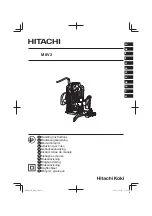
Dialogic
®
DSI SPCI Network Interface Boards Programmer's Manual Issue 5
97
7.2
MTP Parameters
7.2.1
MTP Global Configuration
Syntax:
MTP_CONFIG <reserved1> <reserved2> <options>
Example: MTP_CONFIG 0 0 0x00040f00
The global configuration parameters for the Message Transfer Part (MTP).
<reserved1>, <reserved2>
These parameters are reserved for backwards compatibility. For applications
conforming to this release of the documentation these parameters must
always be set to zero.
<options>
A 32 bit value containing run-time options for the operation of the MTP as
follows:
Bit 0
is set to 1 to disable the MTP3 message discrimination function
(allowing the signaling point to receive all messages irrespective of the
destination point code contained in the message) or zero to allow the
discrimination function to function normally.
Bit 1
is set to 1 to disable sub-service field (SSF) discrimination. If this bit is
set to zero, received MSUs whose ssf value does not match the configured ssf
value for that link set are discarded.
Bit 2
is set to 1 to cause MTP3 to generate a UPU (User Part Unavailable)
message to the network on receipt of a message containing a Service
Indicator value that has not been configured. If set to zero the message is
discarded without sending UPU.
Bit 8
is set to 1 to select ANSI operation; otherwise it must be set to zero.
Bits 9 and 20
are used to select the point codes used in the MTP routing
lable as defined below:
Bit 9
Bit 20
Point Code
Description
0 0
14-bit
ITU
0 1
16-bit
Japan
1 x
(1)
24-bit ANSI
(1)
x indicates don’t care.
Bit 10
is set to 1 for ANSI operation; otherwise it is set to zero.
Bit 11
is set to 1 for ANSI operation; otherwise it is set to zero.
Bit 18
is used to control MTP functionality in the event of detection of RPO
(Remote Processor Outage). If set to 1, RPO is handled in accordance with
the ITU-T 1992 (and later) recommendations. If set to zero, on detection of
RPO the signaling link is taken out of service and restoration commenced.
This bit is usually set to 1.
Bit 20
used in conjunction with bit 9 to select point codes (see above).















































